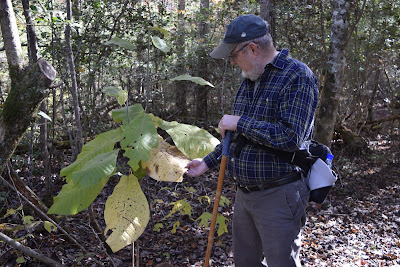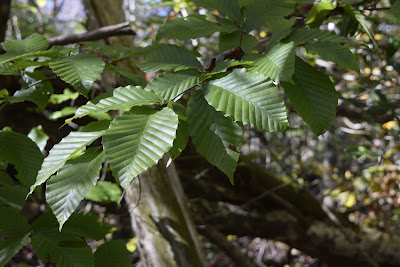Camping at Cumberland Mountain State Park
One of the most beautiful state parks this time of year is Cumberland Mountain State Park. It is located on the Cumberland Plateau in the historic area of Homesteads.
By early afternoon we were set up and ready to explore.
Fortunately this campsite had electricity and water hookups. We wanted to explore the area to see the latest improvements and upgrades to the park. The ADA trail around a portion of the lake was completed and the wide paved trail provides opportunities for a comfortable leisurely amble from the boat house to the visitor's center.
One lonely "sunflower" was the only blooming plant we saw.
A Little History:
Middle Tennessee counties were hard hit by the Great Depression and by 1933, many of the people in the area and surrounding counties were without jobs or means of subsistence. U.S. President Franklin D. Roosevelt established the New Deal Communities Project to help stimulate jobs and provide a means for the mountain people of the Cumberland Plateau to have opportunities for jobs and affordable housing. The Cumberland Homesteads is one of several planned New Deal communities built between 1934 and 1938. Those desiring to become Homesteaders had to apply to be considered. 252 farms consisting of 50 acres each would be available to the select few who qualified. Coal miners, factory workers and farmers made up the majority of those qualified to receive the proposed house and farm. However, the homesteaders worked hard to buy their land and houses. Most of the original homes still stand and provide shelter for second and third generation "Homesteaders." One striking feature of the houses and other buildings in the area is the beautiful stonework. The warm tawny color of the local Crab Orchard stone adds warmth and beauty to the architecture of the Homesteaders houses, Homestead Tower Building, school and buildings at Cumberland Mountain State Park. The iconic arched bridge at the state park stands as a lovely tribute to the hard work, dedication and creativity of the Homesteaders. Built jointly by the CCC and the Homesteaders, the bridge dam creates Byrd Lake.

Below the dam stands the Mill House, a structure currently under renovation. The Mill House was originally intended to be a working mill for the community, but a dispute prevented the mill being completed. You can see the concrete sluice and wheel supports, but the water wheel and grinding parts were never installed.
When the remodeling is completed, the Mill House will be available for large group reservations.
Our intentions the next day was to explore the Daddy's Creek area and hike a segment that goes to the Devil's Breakfast Table. Not to be! For the second time our efforts to reach the trailhead were thwarted by a TWRA big game hunt. We were not permitted to pass the gate at the entrance to Catoosa Wildlife Management Area. Not wishing to be mistaken for a doe or buck, we turned around and sought another entrance where there were no restrictions.
Passing a rare intact fire tower, I couldn't resist a photo shoot. Of course, being "afeared" of heights, I managed to resist climbing the tower. But, I bet there is a glorious view from the top.
A sign posted at the base indicated folks could climb the tower, but at their own risk.
After looping around and passing through Fairfield Glade, we managed to find an obscure trailhead for the southern terminus of the Obed Wild and Scenic River Segment that one day will connect to complete the link to the Devil's Breakfast Table.
Although there was no kiosk or trail signs, we assumed we had reached the right spot.
It was a perfect day for hiking! In some areas along the trail, red leaves carpeted the trail. We heard Daddy's Creek far below us. On rare occasions we caught a glimpse of rapids or still blue deeps. The colors were brilliant!
Vibrant reds....
Glowing yellows...
Towering hemlocks and pines provided a backdrop against the azure sky.
The stone works for dips and creek crossings were very well constructed!
This section of the Cumberland Trail provides a pleasant walk in the woods on a sunny fall day!
Fortunately, a trail sign at a logging road crossing indicates the right direction!

In places the trail was littered with gigantic leaves from the Fraser Magnolia, sometimes called Mountain Magnolia.
We soon came to the descent, a series of stone steps leading down to McGinnis Creek, our destination.
Looking back from the bottom of the steps...
The bridge is sturdily constructed on concrete footers resting on huge boulders.
From the size of the boulders, I would guess that during extremely heavy rains, McGinnis Creek roars down the escarpment!
Although one website indicated the hike is only 2.2 miles from trailhead to bridge, our results showed the hike to be closer to 2.5 miles.
We crossed the bridge, found a comfortable slab of stone to sit on and ate lunch. The completed part of the trail ended a few yards past the bridge.
On our way back up to more level ground, we paused to admire a huge rock outcropping.
Hiking in, the sun was to our backs. Hiking out, the sun cast rays through the trees, at times making the trees seem afire with a brilliance no camera lens can capture.
At first glance, I thought we found an American Chestnut sapling growing from a stump, but I think the leaves are those of an American Beech.
There are many opportunities for hiking in the Cumberland Mountain State Park. We chose to join a ranger-led hike on the Byrd's Creek Trail.
There were 13 of us, counting Rammy the dog. It was a very friendly group! Meghan, our leader, is a seasonal ranger who grew up in southwest Virginia, so she is truly an Appalachian gal!
One of the interesting features on the trail is a bridge built as an Eagle Scout project. If you look toward the ceiling of the bridge as you cross, the structure looks like an inverted canoe.
Heading back to the visitor's center, the start of the trail, we pass through interesting rock outcroppings. Most of the trail followed Byrd Creek.
Lest you think that we suffered while we were "roughing it," look carefully at our day's beginning menu and what we enjoyed at the end of our day! Chef Chris cooked breakfast over hot coals at the stand-up grill. Chef Linda created masterpieces with the crockpot!
Hmmm, now where can we go explore next with our tiny house?









































No comments:
Post a Comment